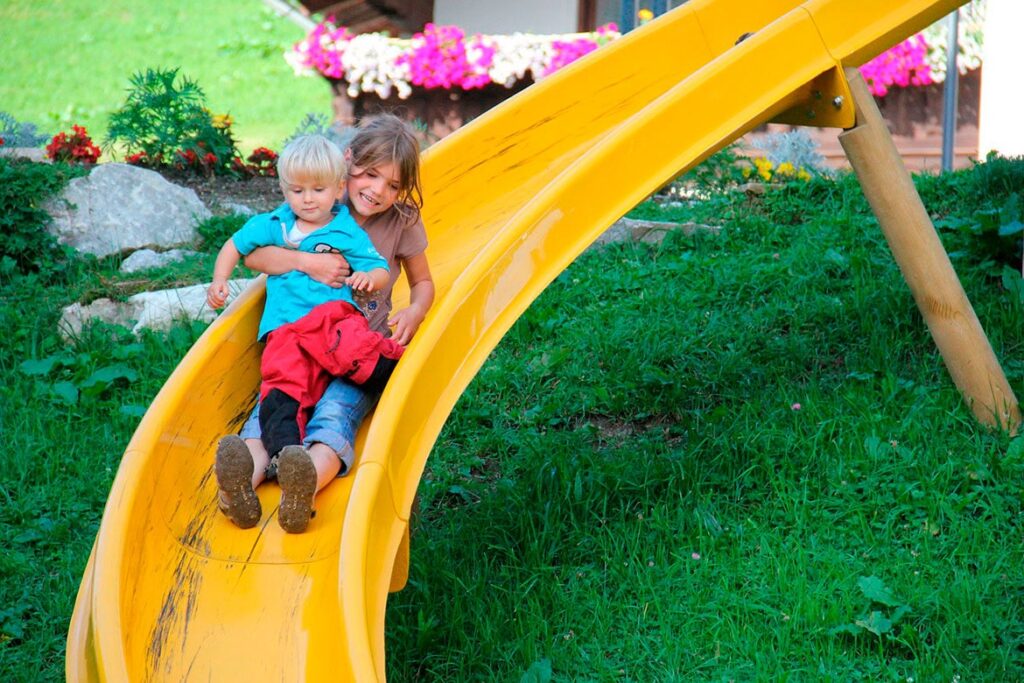Playgrounds have long been recognized as essential spaces for children’s play and development. From the classic swings and slides to more elaborate climbing structures and interactive play zones, playground equipment plays a crucial role in shaping children’s physical, cognitive, social, and emotional development.
In this article, we’ll explore how different types of playground equipment contribute to children’s growth and why it’s important to consider their design and accessibility.
Physical Development
The physical benefits of playground equipment are perhaps the most apparent. Swings, slides, climbing frames, and other equipment provide opportunities for children to engage in physical activity, which is vital for their overall health and well-being.
Climbing structures build upper body strength, coordination, and confidence as children navigate their way up and down, learning to balance and judge distances.
Cognitive Development
Playground equipment also stimulates cognitive development. As children interact with different types of equipment, they are constantly problem-solving, assessing risks, and learning about cause and effect.
For example, a child might experiment with different strategies to climb a rope ladder or figure out the fastest way to reach the top of a climbing wall. These activities help develop spatial awareness, problem-solving skills, and decision-making abilities.
Stimulating Sensory Integration
Playground equipment provides sensory-rich experiences that stimulate children’s senses and support sensory integration. Swinging, spinning, and jumping activate the vestibular system, while climbing, touching different textures, and exploring sensory panels engage the tactile and proprioceptive senses.
Sensory integration is crucial for children’s ability to process and respond to sensory information effectively, contributing to their overall sensory processing skills and emotional regulation.
Encouraging Risk Assessment and Management
Playground equipment allows children to engage in risky play within a controlled environment, where they can learn to assess risks and make informed decisions about their actions. Through experimentation and experience, children develop a sense of their own abilities and limitations, learning when to take risks and when to exercise caution.
This process of risk assessment and management is essential for developing resilience, confidence, and self-reliance, preparing children to navigate challenges and uncertainties in the future.
Supporting Language and Communication Development
Playground interactions provide opportunities for language and communication development as children engage in conversation, negotiation, and imaginative play with their peers.
Whether they’re collaborating on a construction project in the sandbox or role-playing different characters on the play structure, children are practicing their language skills, expanding their vocabulary, and learning the nuances of social interaction.
Encouraging Physical Activity
Playground equipment serves as a catalyst for physical activity, combating sedentary behaviors and promoting a healthy lifestyle from an early age.
Active play on swings, slides, and climbing structures helps children develop motor skills, coordination, and agility. Regular physical activity not only supports physical health but also enhances cognitive function, mood, and overall well-being.
Promoting Risk-Taking and Resilience
Playgrounds offer children opportunities for controlled risk-taking, which is essential for their emotional and cognitive development.
Climbing high, balancing on beams, or navigating challenging obstacles encourage children to push their boundaries, overcome fears, and develop resilience.
Through trial and error, they learn to assess risks, make decisions, and bounce back from setbacks, building confidence and self-efficacy.
Fostering Imagination and Creativity
Playground equipment sparks imaginative play, allowing children to explore fantasy worlds, role-play scenarios, and engage in storytelling.
A simple structure can become a castle, a fortress, or a secret hideout, encouraging children to use their creativity and imagination to invent new games and narratives. Imaginative play fosters cognitive flexibility, problem-solving skills, and the ability to see things from different perspectives.
Building Confidence and Social Skills
Interacting with peers on playground equipment cultivates confidence and social skills as children navigate social dynamics, negotiate rules, and collaborate on shared goals. Cooperative play on seesaws, merry-go-rounds, and group swings encourages teamwork, communication, and empathy.
Children learn to share, take turns, and resolve conflicts peacefully, laying the foundation for positive social relationships and effective communication skills.
Enhancing Sensory Exploration
Playground equipment often incorporates sensory elements such as sandboxes, water play areas, musical instruments, and tactile surfaces, providing opportunities for sensory exploration and stimulation. Sensory-rich environments engage children’s senses, supporting their cognitive development, language acquisition, and emotional regulation.
Sensory play encourages children to investigate, experiment, and make sense of the world around them, fostering curiosity and a lifelong love of learning.
Encouraging Nature Connection
Many modern playgrounds integrate natural elements such as logs, boulders, and plants to create nature-inspired play spaces. These elements offer children opportunities to connect with the natural world, fostering an appreciation for the environment and biodiversity.
Nature play encourages exploration, observation, and discovery, promoting ecological literacy and a sense of stewardship for the planet.
Supporting Family and Community Bonding
Playgrounds serve as gathering places for families and communities, fostering social connections and strengthening bonds between parents, caregivers, and children. While children play, parents and caregivers have opportunities to engage with each other, share parenting experiences, and build supportive networks.
Playgrounds also provide a space for community events, celebrations, and neighborhood activities, contributing to a sense of belonging and social cohesion.
Conclusion
In conclusion, playground equipment plays a multifaceted role in shaping children’s development, encompassing physical, cognitive, social, and emotional domains.
By providing diverse and inclusive play experiences, we can ensure that playgrounds continue to be vibrant spaces where children can learn, grow, and thrive.

